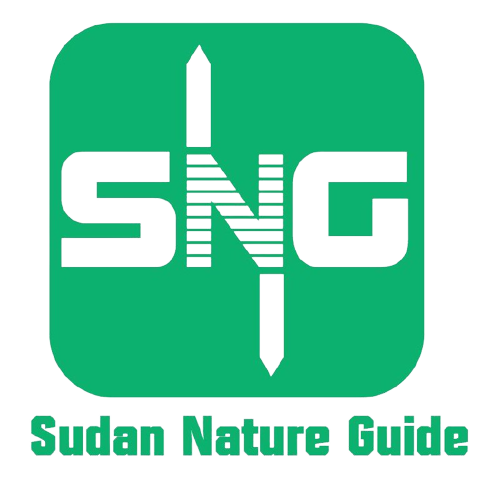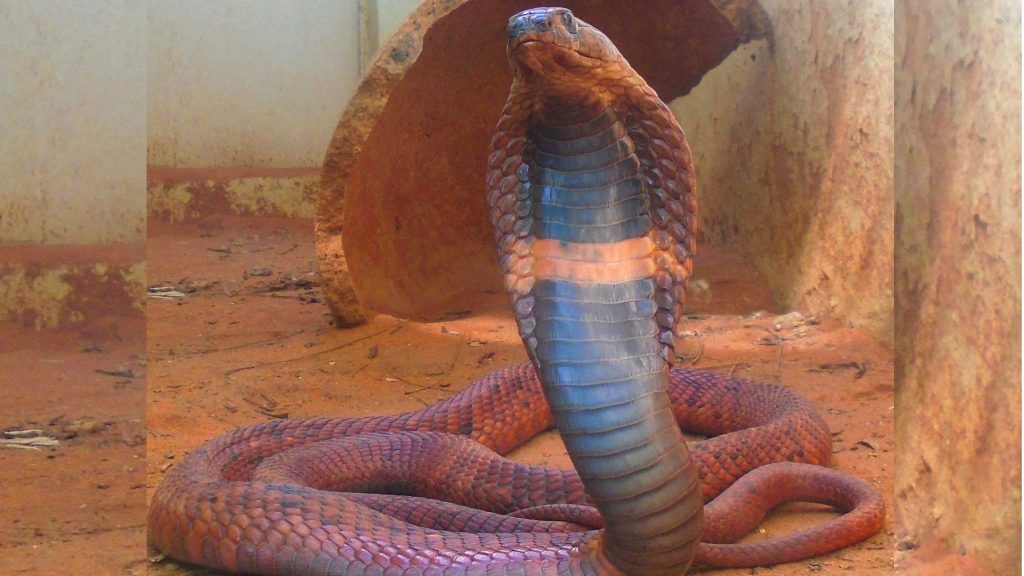By Entesar Salih
Egyptian cobra Naja haje
Has a cylindrical body and a long tail, it is characterized by the possession of a row of subocular scales separating the eye from the supralabials, which distinguishes it from all other cobras, Maximum size 2.5m (Stephen 2020) in Sudan there are two distinct morph; one is rufous, red-brown color with wide black band on the neck crossed by small light band, the other is cholic which is tan with black banded/ blotches. Locally it called Abu Daraga, because when excited and threatened or threatening moves its hooded head from side to side much as a combatant feints and parries with a shield (Korkill1935).
Habitat and Distribution:
Mostly in semi-desert, moist and dry savanna, woodland (never forest), grassland and agricultural lands. Around the Sahara it is not in true desert but instead in vegetated wadis and the agriculture regions.
Distribution in Sudan:
The distribution range of this species include Notheren State, river Nile, Blue Nile, White Nile, Gezira, Kassala, Gadarif, Sinnar and Kordufan states.
IUCN category: Least Concern
Envenomation:
Bites may cause some local swelling, but necrosis does not develop. Classic neurotoxic symptoms appear as early as 30 minutes after the bite and can evolve to the point of fatal respiratory paralysis within 2–16 hours.
First Aids:
- After ensuring the patient and onlookers have moved out of range of further strikes by the snake, the bitten person should be reassured and persuaded to lie down and remain still.
- Wiping the bite wound once with a damp cloth to remove surface venom but the wound must not be massaged.
- All rings or other jewelry on the bitten limb, especially on fingers, should be removed, as they may act as tourniquets if oedema develops.
- If the bite is on a limb, a broad bandage (even torn strips of clothing or pantyhose) should be applied over the bitten area at moderate pressure.
- The bitten limb should then be immobilized as effectively as possible using an extemporized splint or sling.
- If there will be considerable delay before reaching medical aid, measured in several hours to days, then give clear fluids by mouth to prevent dehydration, Avoid peroral intake, absolutely no alcohol. No sedatives outside the hospital
- The snakebite victim should be transported as quickly and as passively as possible to the nearest place where they can be seen by a medically trained person (health station, dispensary, clinic, or hospital). The bitten limb must not be exercised.
- Most traditional, and many of the more recently fashionable, first aid measures are useless and potentially dangerous. These include local cauterization, incision, excision, amputation, suction by mouth, vacuum pump or syringe, combined incision and suction (“venom-ex” apparatus), injection or instillation of compounds such as potassium permanganate, phenol (carbolic soap) and trypsin, application of electric shocks or ice (cryotherapy), use of traditional herbal, folk and other remedies including the ingestion of emetic plant products and parts of the snake, multiple incisions, tattooing and so on.

